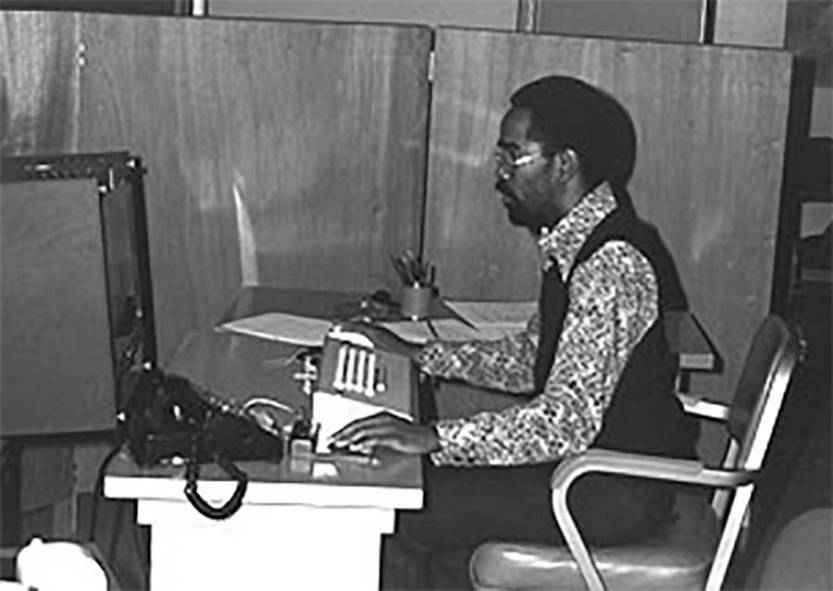from Beau Hardeman, Professional – App/Prod Support, AT&T Services
I joined ARC (Augmentation Research Center at SRI (Stanford Research Center)) directly out of Morehouse College, Atlanta, GA in 1971. I remember well meeting Doug for the first time during the interview. He was wearing his staple black turtle neck and busy in his office with his back to me. Hoping to be at my best, I addressed him: “Hello Dr. Engelbart.” He turned around and, with a frown on his face and in that characteristic soft voice, said: “Please, call me Doug.”
I interviewed two labs at SRI, ARC and AIC (Artificial Intelligence Center) around the corner. I received offers from both. I must admit AIC was seductive, since I actually played the computer chess (Greenblatt program) during my interview, and the top scientists in AIC came to watch me [lose]. That program I believe is the mother of all chess programs. I got my revenge later.
But, there was something about Doug that drew me. I had never met a visionary of that caliber before or since, but whatever it was at first captivated me. For one, I had just been introduced to the punched card in college and was impressed enough with that, but here he had already graduated to the terminal and beyond that to the combination mouse and 5 finger keyset (where entering the alphabet resembled playing a chord on the piano) in a system (NLS) that used 2 letter mnemonics for commands. He was already addressing the issue of the non-typist versus the terminal keyboard (Doug couldn’t type, but pecked the keyboard with one hand). Text processing, the forerunner to word processing, I believe, also originated at ARC. ARC also housed the NIC, the Network Information Center, for the Arpanet (the Advanced Research Projects Agency Network), the forerunner of the internet.
The 3 years at ARC were the most meaningful, not only career wise, but overall. Doug seemed as interested in the human side of the man-machine interface as he was the machine side. How interesting it was that we were perhaps one of the first groups at that time to utilize computer terminals in our day to day work, and we each had an individual office. Yet, through Doug’s brilliance, there were no terminals in the offices. They were out in a central area where we could collaborate as we used them. The office was for thinking, contemplating. We were also organized into groups called pods, and studied further by trained professionals. A typical office meeting would begin with us sitting Indian style on the floor, complete with a rug and “Smokey” (one of the system programmers) strumming something on the guitar as we waited for Doug. When the cheese and wine came out that’s when the guy in the dark suit came in and the bust was on. If the system crashed during the afternoon and Smokey announced it would be down for a while, there would be a rush to the newspaper to see if there was a meaningful matinee at the local theater. Often at lunch time I would dart around the corner to the AIC to play physicist Russell Targ blitz (5 minute) chess for lunch money. He was Bobby Fischer’s brother-in-law. No kidding.
When the Apple Macintosh came out in the 80’s, for me Doug’s work had gone full circle. The mouse had caught on and was here to stay. I was so enthralled with the MAC I was dubbed “MacBeau.” Now, whenever I see or use a mouse I know Doug’s vision is behind it. It’s too bad his name, along with ARC, was left out of “Triumph of the Nerds.” They give that leg of the journey almost entirely to PARC (Palo Alto Research Center). I remember Bill English and Chuck Irby and others collaborated with them, but I never doubted where the mouse was born.
The parallel of Menlo Park, California with Menlo Park, New Jersey never escaped me, given I also interviewed with Bell Labs in New Jersey that year. Thomas Edison was dubbed the Wizard of Menlo Park [New Jersey]. Doug was and always will be to me the Wizard of Menlo Park [California].

My Mom was Doug’s sole assistant…what a team!